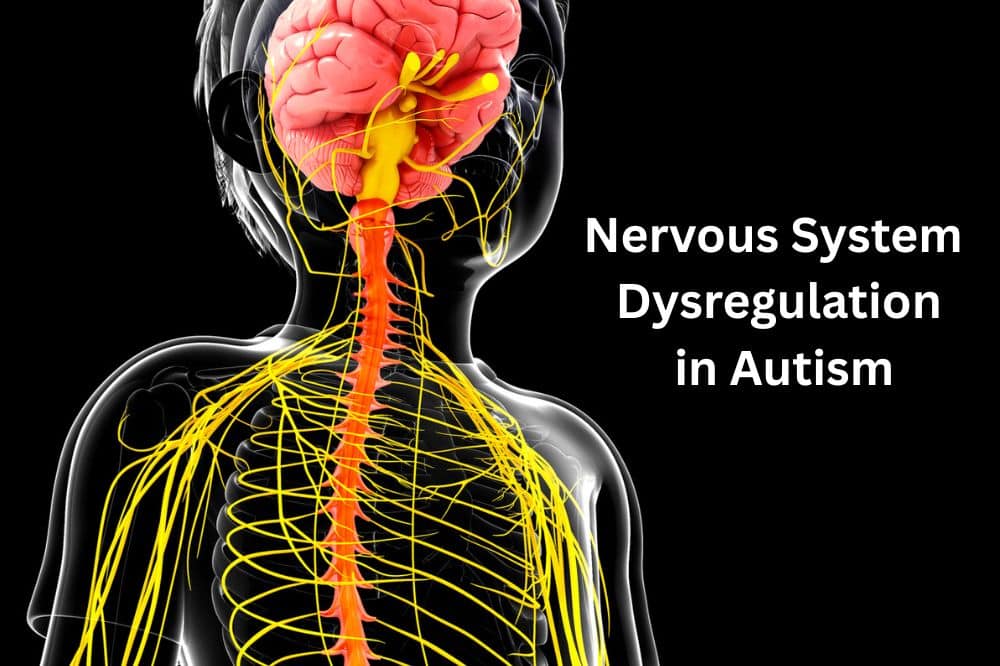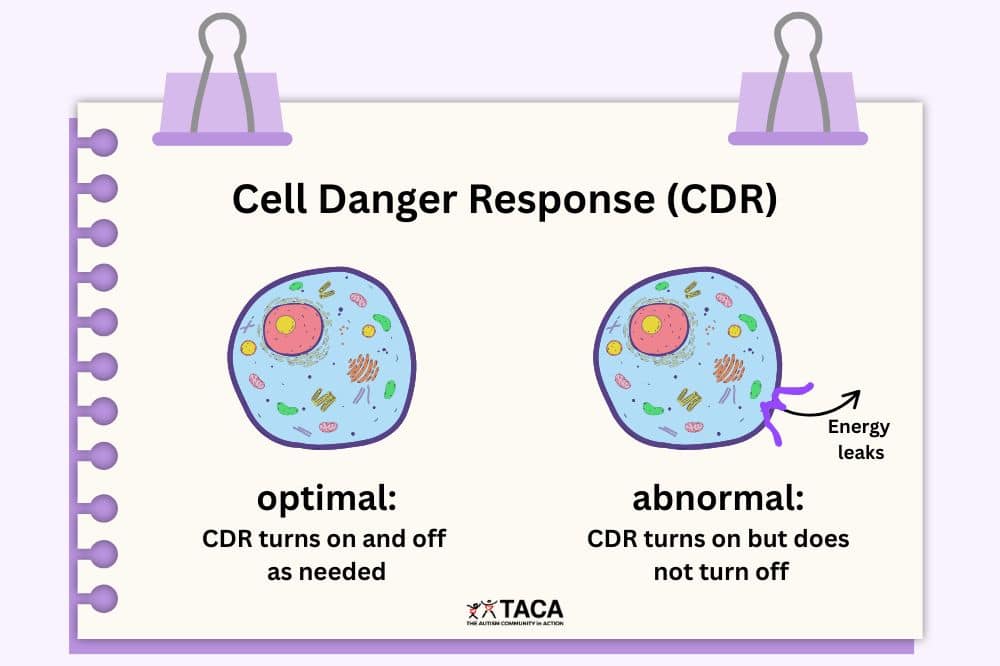Behavior Issues at School: FBA, BIP, and Seclusion and Restraint
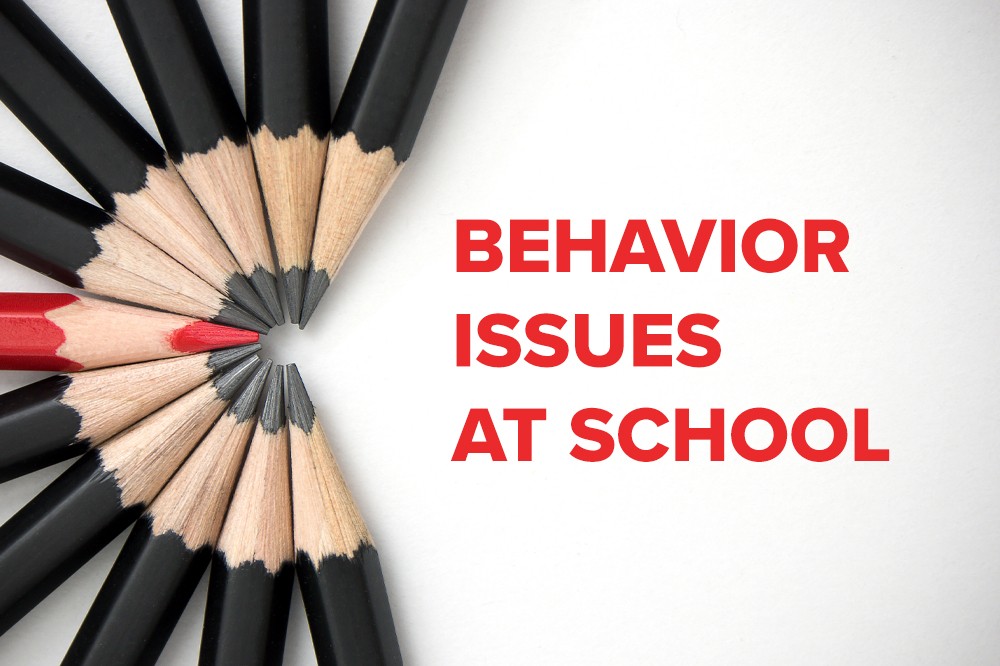
All contents of this resource were created for informational purposes only and are not intended to be a substitute for professional advice, diagnosis, or treatment. Always seek the advice of your physician, therapist, or other qualified health providers with any questions or concerns you may have.
Students with autism may display challenging behaviors that interfere with their education or another student’s education. When this happens, schools should address behavior issues by conducting a Functional Behavior Assessment (FBA) to create a Behavior Intervention Plan (BIP). Doing so will help identify why the behavior is occurring and to address it appropriately. Furthermore, schools should make every effort to prevent the need for the use of seclusion and restraint.
In this article, we will discuss behavior issues at school, specifically:
- Functional Behavior Assessments (FBA)
- Behavior Intervention Plans (BIP)
- Seclusion and Restraint
For an in-depth article about FBAs and BIPs, please read Managing Behavior at School: FBA and BIP.
Behavior Issues at School: Functional Behavior Assessments (FBA)
If your child’s behavior escalates to a point where it impedes their ability to learn or another student’s ability to learn, contact the school and ask for an IEP meeting. In the meeting, ask the school to conduct a Functional Behavior Assessment (FBA) to identify the reason for, or function of, the behavior and how to best address it.
In an FBA, a trained and qualified professional will collect and analyze data to determine the ABCs of the behavior:
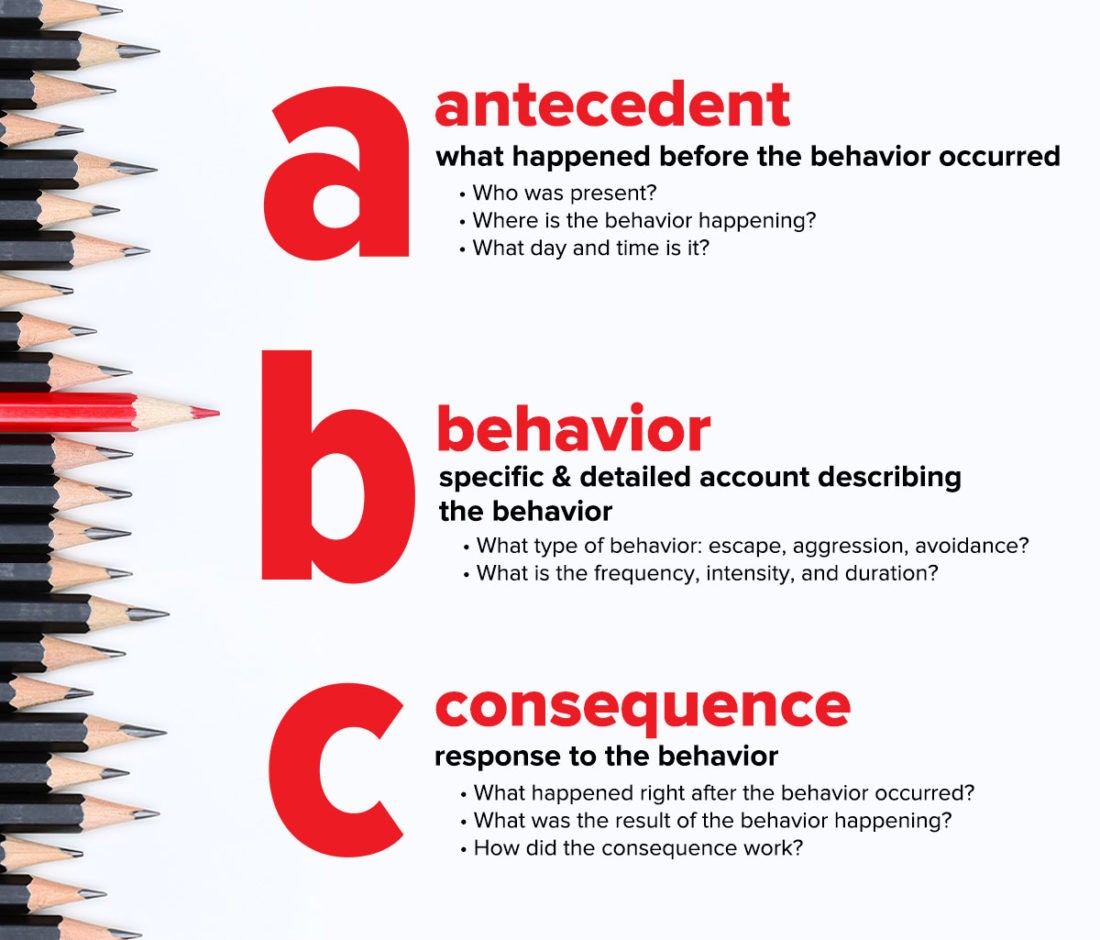
Tips for Obtaining a Thorough FBA
Determining the function of a behavior requires expertise. Therefore, a qualified specialist should be in charge of conducting your child’s FBA and, subsequently, developing their BIP.
In order to ensure that your child receives a thorough FBA, please discuss the following as an IEP team:
- What kind of training and experience will the person conducting the FBA have?
- Are they a licensed behavior specialist, a psychologist, etc.?
- Do they have experience working with children with autism?
- Do they have experience dealing with behavior challenges similar to your child’s?
- What kind of formal and informal evaluation tools will the team use to collect data for the FBA?
- Observations:
- Will the person in charge of conducting the FBA observe your child in environments where the behavior does and does not occur?
- Observing your child in both environments can provide insight into what works and what doesn’t work.
- Will the person in charge of conducting the FBA observe your child in environments where the behavior does and does not occur?
- Interviews:
- Teachers, parents, aides, therapists, etc.
- School record review
- Assessments
- Observations:
Behavior Issues at School: Behavior Intervention Plans (BIP)
After the data for the FBA is collected and analyzed, your child’s IEP team will meet to discuss the results and determine if your child needs a Behavior Intervention Plan (BIP).
In order to make the most out of this meeting, please ensure that:
- All individuals involved with collecting, assessing, and analyzing data for the FBA can attend the meeting.
- All data collectors and assessors have ample time to explain their assessment results, answer questions, and make recommendations to address the behavior.
Purpose of a BIP
If the team determines that your child will benefit from a BIP, it is essential to remember that:
- Behavior plans are not a form of punishment.
- Instead, BIPs utilize positive behavior supports to reduce challenging behaviors.
- The goal of the BIP is to prevent challenging behavior from occurring.
- The BIP gives strategies for school staff to use to minimize the behavior.
- BIPs identify replacement behaviors and strategies for developing them.
- Parents and school personnel must provide opportunities for children to learn and practice replacement behaviors!
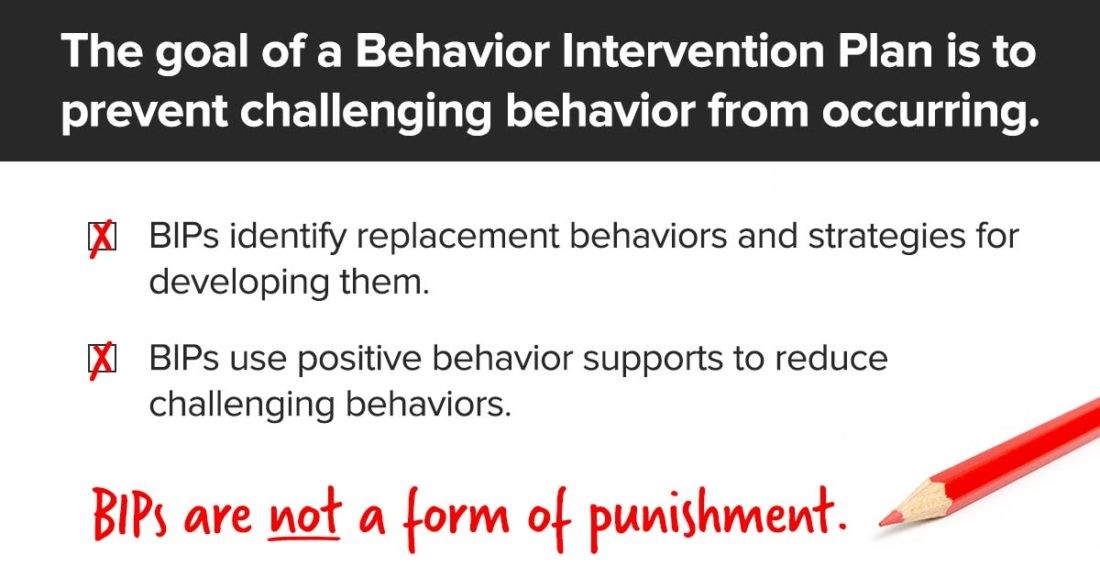
Tips for Developing an Effective BIP
The following tips will help you and your child’s team develop an effective BIP:
- Make sure all team members understand the underlying principles behind the strategies outlined in the BIP.
- Determine and document how staff will receive training regarding how to correctly and appropriately implement the BIP.
- Identify which staff members require training, when training will occur, and who will provide the training.
- Ask team members if they foresee any obstacles or challenges with implementing the BIP.
- Doing so will ensure the BIP is practical and realistic.
- When addressing aggressive or non-compliant behavior, document precisely what the school district can and cannot do regarding restraint and seclusion (see more below).
Review of Program and FBA/BIP
Above all, understand that creating an effective BIP will require some troubleshooting. In fact, problem behaviors may continue to occur or even escalate after the BIP is in place. This doesn’t mean that behavior interventions don’t work or that there is no hope for your child. Rather, it merely means that your child’s BIP needs to be modified.
Because of this, we suggest that parents regularly meet with their child’s team to review the BIP. Doing so will help ensure that your child’s BIP is appropriate, and therefore effective.
When reviewing your child’s BIP with their team, be sure to discuss:
- Supports – are they adequate?
- Reinforcements – are they encouraging replacement behaviors, reinforcing problem behavior, or frustrating your child?
- Placement – will your child benefit from making changes to their learning environment?
- The qualification, training, and supervision of staff and service providers.
Behavior Issues at School: Seclusion and Restraint
When discussing behavior interventions with the school, it is of the utmost importance that they include an open and honest conversation about seclusion and restraint.
- Seclusion: procedures that isolate a student from others in an area from which they cannot leave.
- Restraint: physical or mechanical restriction of a student’s movement.
Issues Regarding the Use and Effect of Seclusion and Restraint
Seclusion and restraint are controversial topics, and rightly so. This is because there are several issues regarding their effect and use:
- Schools are more likely to restrain and seclude students with disabilities.
- Students with special needs make up about 12% of the public school student population nationally, yet they account for 71% of physical restraints and 66% of incidents involving seclusion.
- Alarming as that statistic is, the reality is most likely worse as there is strong evidence to suggest that schools are under-reporting incidents of seclusion and restraint.
- For instance, the most recent GAO report indicates that 70% of all school districts reported zero incidents!
- Furthermore, the use of seclusion and restraint is prone to misapplication and abuse – possibly placing students in even more unsafe situations.
- Even if no physical injury is incurred, seclusion and restraint can be traumatizing.
- And, even the Department of Education says there is “no evidence that using restraint or seclusion is effective in reducing the occurrence of the problem behaviors that precipitate the use of such techniques.”
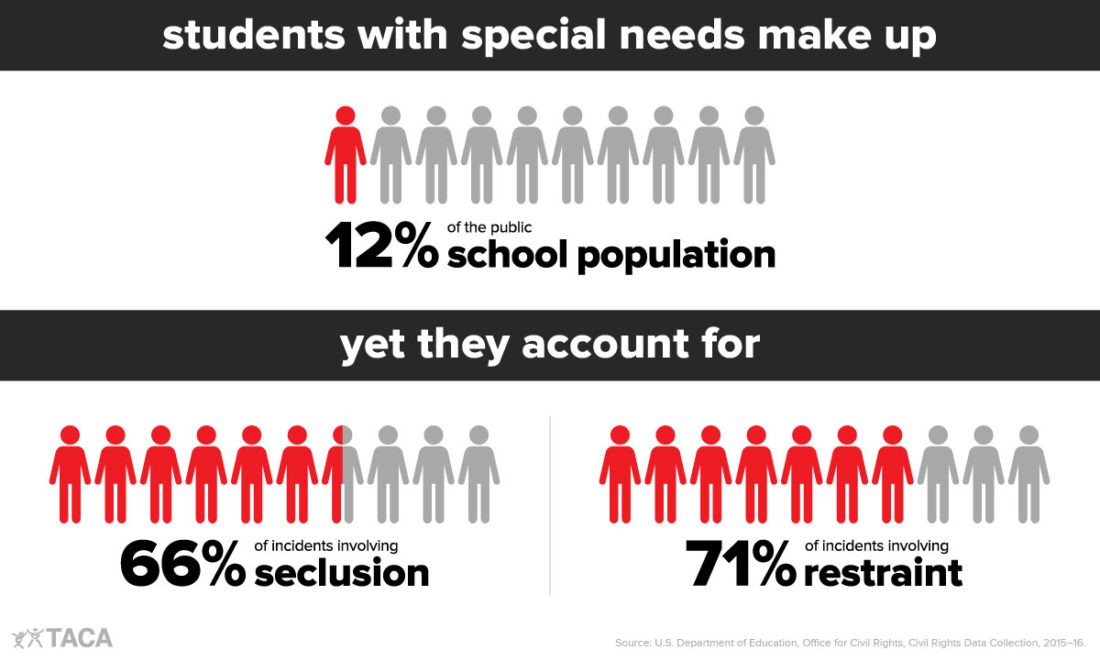
Federal Guidelines and Laws that Offer Protections Regarding the Use of Seclusion and Restraint
Further complicating matters: there are no federal laws that regulate or restrict the use of seclusion and restraint in schools. Therefore, individual states and districts are able to determine their own policies.
Because policies vary from state to state, and even school district to school district, parents must speak with their school to determine their individual district’s policy regarding seclusion and restraint.And, by all means, ask the school to provide their policy to you in writing.
While the federal government hasn’t established any laws that specifically address seclusion and restraint, they do offer some guidelines for their use as well as protections through IDEA.
US Department of Education’s Guidelines for Seclusion and Restraint
When speaking with your school about seclusion and restraint, it is important to be aware of the following 15 Principles for Seclusion and Restraint from the US Department of Education:
- Schools should make every effort to prevent the need for the use of seclusion and restraint.
- Schools should never use mechanical restraints to restrict a child’s freedom of movement.
- The school can only use restraint or seclusion if a child’s behavior poses an imminent danger of serious physical harm to themselves or others.
- Restraint and seclusion policies should apply to all children, not just those with disabilities.
- Behavioral interventions must be free from abuse and treat the child with dignity.
- Schools cannot use restraint and seclusion as a routine strategy to address instructional problems or inappropriate behavior, as a means of coercion or retaliation, or as a convenience.
- Restraint and seclusion should never be used in a manner that is harmful or restricts breathing.
- Schools should develop, review, and revise the student’s BIP if there is a repeated need for the use of restraint or seclusion.
- Behavior strategies (to address behaviors resulting in restraint and seclusion) should address underlying causes of the behavior.
- Teachers and other personnel should receive regular training on the safe use of restraint and seclusion and their alternatives.
- Incidents of restraint and seclusion should be carefully, continuously, and visually monitored to ensure the appropriateness and safety of its use.
- Schools should inform parents of their policies regarding seclusion and restraint.
- Parents should be notified ASAP following each instance that seclusion or restraint is used with their child.
- Schools should regularly review and update their policies regarding seclusion and restraint.
- Schools must document each incident of seclusion and restraint in writing.
Protections Through IDEA Law
Additionally, IDEA offers protections against the use of restraint and seclusion under its obligation to provide students with disabilities access to a Free Appropriate Public Education (FAPE).
For example, restraint and seclusion might deny FAPE if:
- A lack of services or supports is causing behaviors that warrant the use of seclusion or restraint.
- For example, if your child doesn’t have a BIP, has an ineffective BIP, or inadequate staff training is causing their BIP to be implemented incorrectly, the school is denying them access to FAPE.
- Multiple or extended incidents prevent your child from receiving educational instruction or services.
- An incident or incidents causes trauma, resulting in new academic or behavioral issues, and those issues are not promptly addressed.
- Trauma can manifest itself in many behaviors, such as difficulty concentrating or paying attention in class, frequent absences, task avoidance, elopement, etc.
- Incidents involve differential treatment.
- For example, the school restrains or secludes your child for hitting but doesn’t restrain or seclude peers without disabilities for engaging in the same behavior.
Conclusion
Ultimately, even if your child’s behavior interferes with their education or another student’s education, the school must take certain steps to ensure that your child maintains access to FAPE. They can do this by obtaining a thorough FBA and developing an effective and appropriate BIP. Additionally, an effective BIP will help prevent the need for the use of seclusion and restraint. Nonetheless, parents need to have an open and honest discussion with their child’s school regarding the use of seclusion and restraint.
Additional Reading and Resources
FBAs and BIPs:
- Wrights Law: Functional Behavior Assessments
- Special Education Guide: Functional Behavior Assessment and Behavior Intervention Plans
- Understood: Functional Assessment: What It Is and How It Works
Seclusion and Restraint:
- Restraint and Seclusion of Students with Disabilities Fact Sheet from the US Department of Education
- Dear Colleague Letter: Restraint and Seclusion of Students with Disabilities
- Wrights Law: Abuse, Restraints, and Seclusion in School



